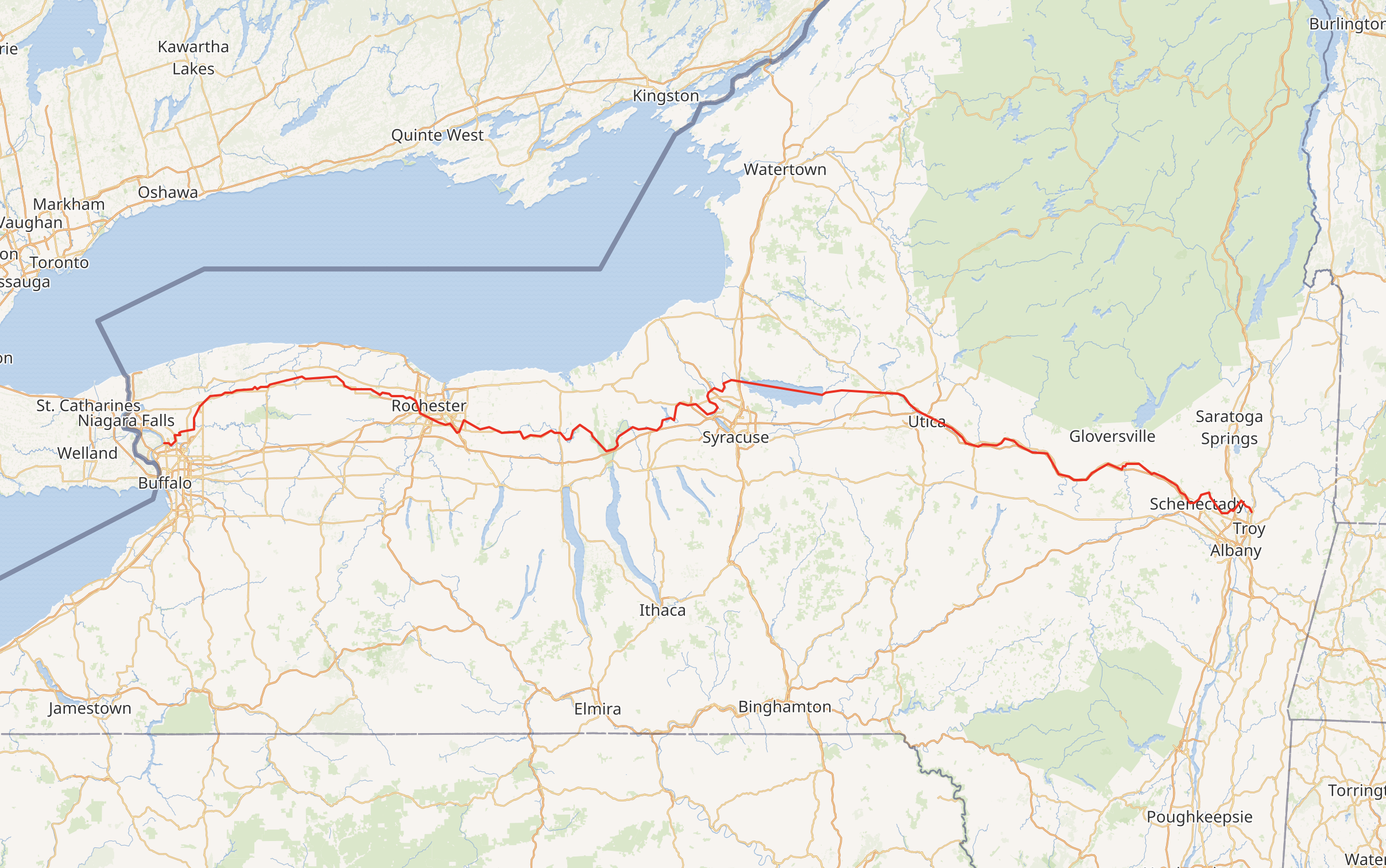Erie Canal
GATEWAY TO THE FINGER LAKES
The Erie Canal is a 363-mile waterway that connects the Great Lakes with the Atlantic Ocean via the Hudson River in upstate New York. The channel, which traverses New York state from Albany to Buffalo on Lake Erie, was considered an engineering marvel when it first opened in 1825. The Erie Canal provided a direct water route from New York City to the Midwest, triggering large-scale commercial and agricultural development—as well as immigration—to the sparsely populated frontiers of western New York, Ohio, Indiana, Michigan and points farther west. The canal transformed New York City into the young nation’s economic powerhouse, and in 2000 the U.S. Congress designated the Erie Canal a National Heritage Corridor.
TRANSFORMING New York State
The construction of the Erie Canal, through mountainous terrain and dense rock proved as challenging as the political environment.
Throughout construction, Dewitt Clinton’s political opponents ridiculed the project as “Clinton’s Folly” or “Clinton’s ditch.”
It took canal laborers—some Irish immigrants, but most U.S.-born men—eight years to finish the project. They cleared the land by hand and animal power and blasted through rock with gunpowder. (Dynamite wasn’t invented until the 1860s by Swedish scientist Alfred Nobel.)
The original Erie Canal was just four feet deep and 40 feet wide, though it was considered a major engineering feat at the time of its completion in 1825. It traversed nearly 400 miles of fields, forests, and rocky cliffs, and contained 83 locks—structures used for raising and lowering boats between canal stretches with different water levels.
The Erie Canal opened on October 26, 1825. A fleet of boats, led by Governor Dewitt Clinton aboard the Seneca Chief sailed from Buffalo to New York City in record time—just ten days.
Commercial impact
The canal transformed New York City into the commercial capital it remains today. Prior to the canal’s construction, the ports of Boston, Philadelphia and New Orleans outranked New York in size.
But the construction of the Erie Canal gave New York City (via the Hudson River) direct water access to the Great Lakes and regions of the Midwest. As the gateway to these resource-rich lands, New York soon became the nation’s economic epicenter and the primary port of entry to the United States for European immigrants.
New York City’s population quadrupled between 1820 and 1850. Financing of the Erie Canal’s construction allowed the city to eclipse Philadelphia as the country’s most important banking center.
The Erie Canal also provided an economic boost to the entire United States by allowing the transport of goods at one-tenth the previous cost in less than half the previous time. By 1853, the Erie Canal carried 62 percent of all U.S. trade.
For the first time, manufactured goods such as furniture and clothing could be shipped in bulk to the frontier.
Farmers in western New York and the Midwest now had cash to purchase consumer goods, because they could more cheaply ship wheat, corn and other crops to lucrative East Coast markets.
The Erie Canal also helped to stimulate America’s nascent tourism industry. It attracted vacationers, including Europeans such as Charles Dickens. Thousands of tourists floated down the canal on excursions from New York City to Niagara Falls.




